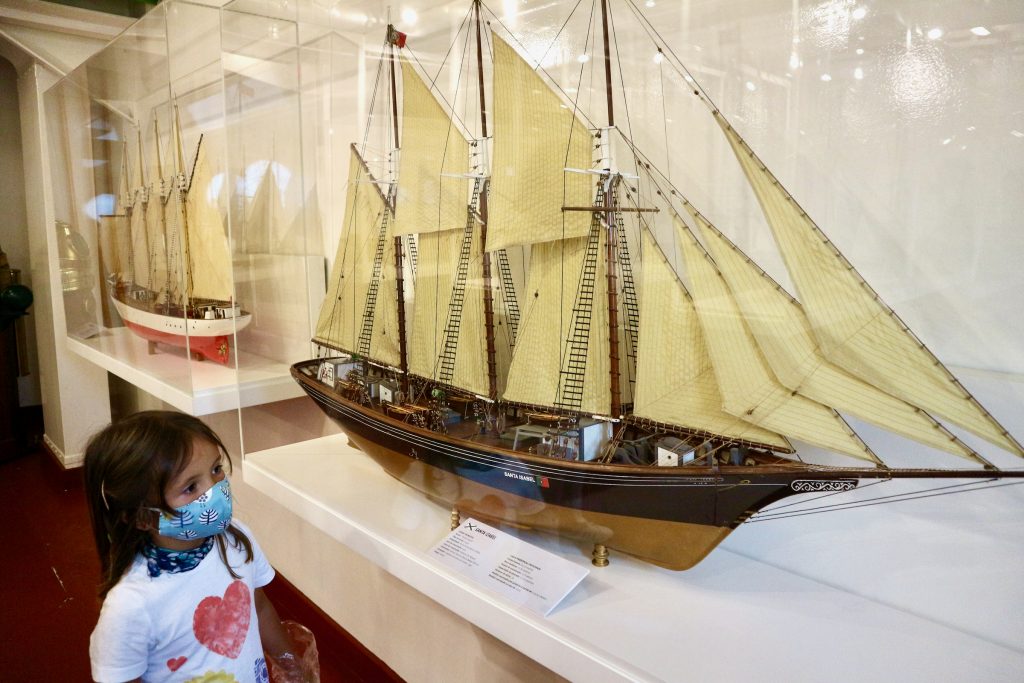Explore the crew cabins, bridge, surgery room and barber’s cabin, and climb down into the huge engine room
Rainy days are unfortunately not uncommon on the west coast of Portugal, especially north of Lisbon, even in summer. After our last summer holiday, I would even go so far as to say that they can be considered normal. And so, on one of these gloomy days, we half-heartedly managed to visit the museum ship Gil Eannes. Due to Corona, there was even a small queue waiting for us at the entrance to the ship, but as we waited there right next to the ship, we had no idea what an eventful afternoon lay ahead of us.
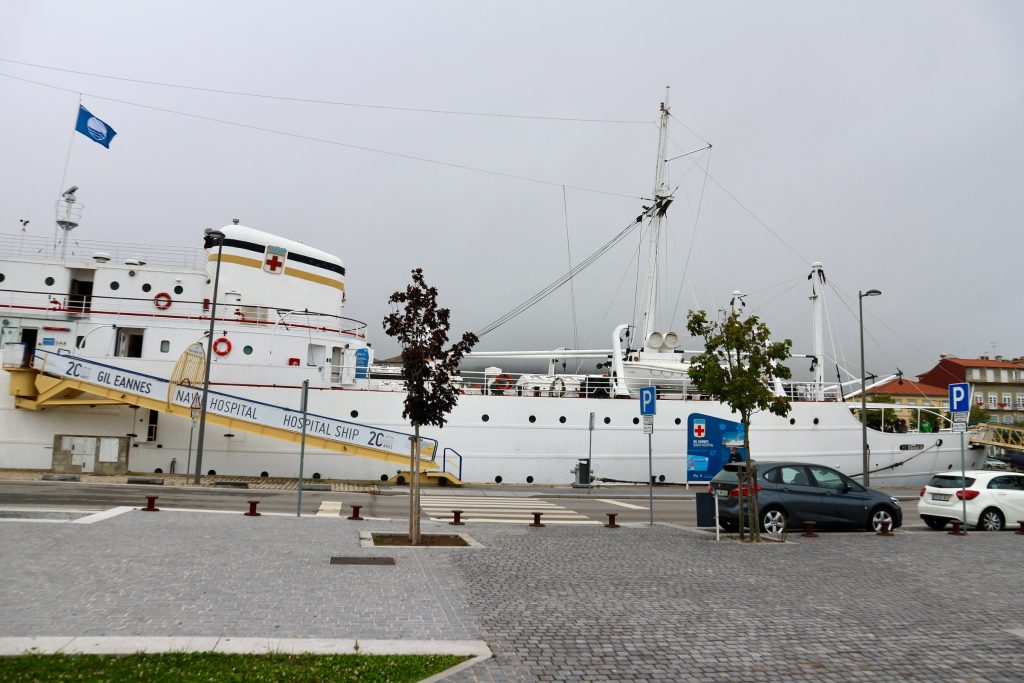
The Gil Eannes (II) was launched in 1955 by the Estaleiros Navais de Viana do Castelo shipyard as a supply and hospital ship for the White Fleet of cod fishermen. She was built to succeed the by-then obsolete Gil Eannes (I). Incidentally, this predecessor ship was the Lahneck, built in Bremerhaven in 1914, which, like 72 other German ships in Portugal, was seized in the course of the First World War, triggering the German Empire’s declaration of war against Portugal.
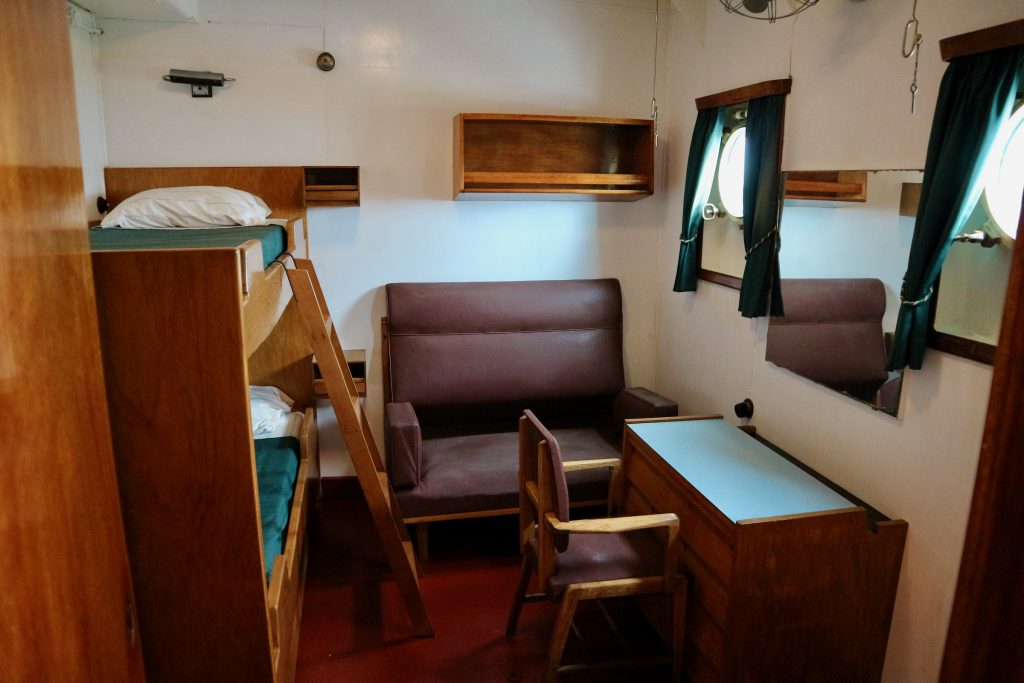
Both ships got their name from the Portuguese explorer Gil Eanes, who probably came from Lagos and was the first to sail around Cape Bojador in 1434. Until then, this cape was considered the end of navigable sea areas. As a result of this feat, the new type of caravel was probably developed, which, among other things, could be better used in adverse current and wind conditions.
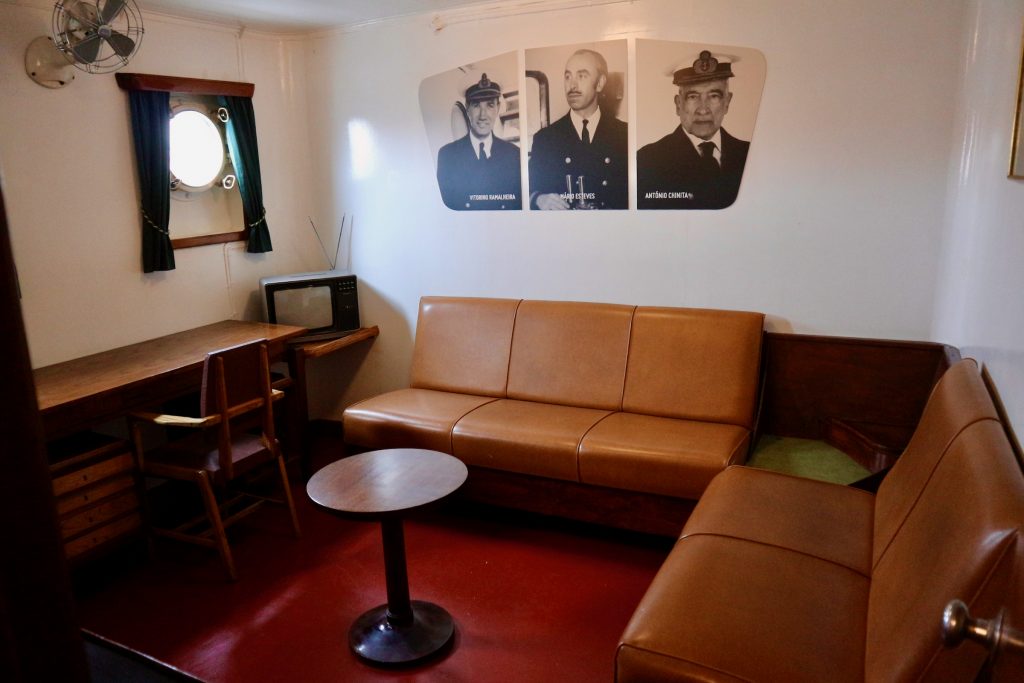
When the Gil Eannes left for Newfoundland for the first time in May 1955, she took a statue of the Madonna of Fatima with her. This was taken in procession to the Basilica of St. John’s with the participation of the 4,000 fishermen of the Portuguese cod fishing fleet, as a gift to the Canadian population of the city, who were always well-disposed towards the Portuguese fishermen.
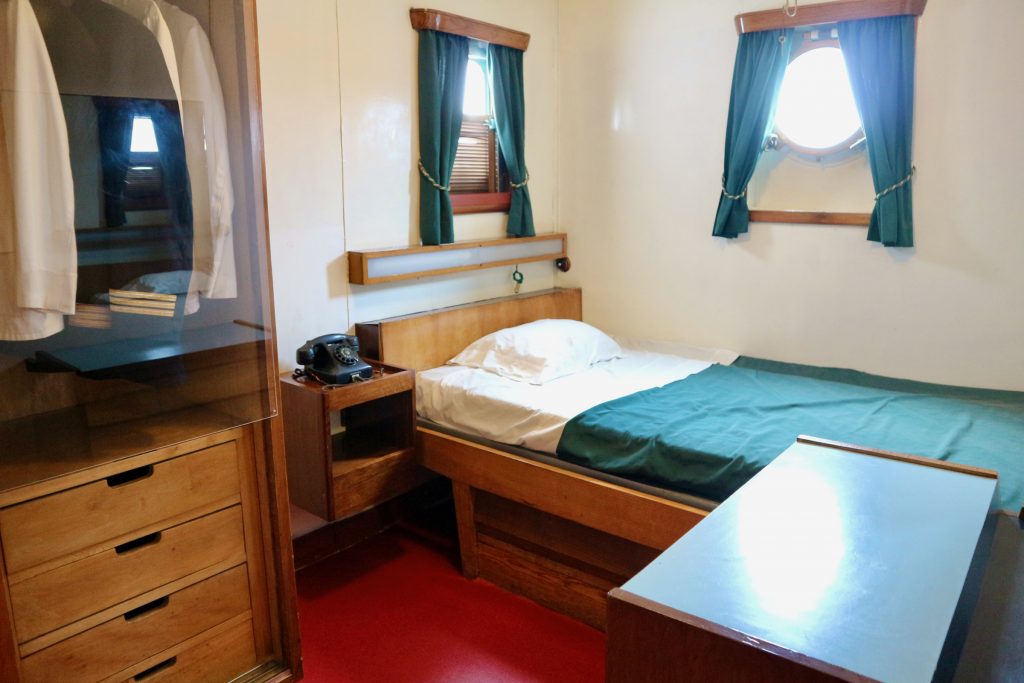
As a hospital ship, the Gil Eannes had various wards, treatment rooms, a radiology station, two surgery rooms, a chapel and several recreation rooms. It carried three doctors and nurses, but also a priest, as well as a total of 72 officers and crew members, 6 passengers and up to 74 patients. Until 1973, the Gil Eannes accompanied the Portuguese fishing fleet to the fishing grounds at the Grand Banks of Newfoundland, until conflicts arose with the Canadian government over overfishing. In fact, cod has been considered overfished since the 1990s. The huge stocks around Newfoundland and Greenland, which probably already attracted the Vikings to North America, have now shrunk enormously and the cod is now one of the most endangered fish species in the world’s oceans due to overfishing and climate change.
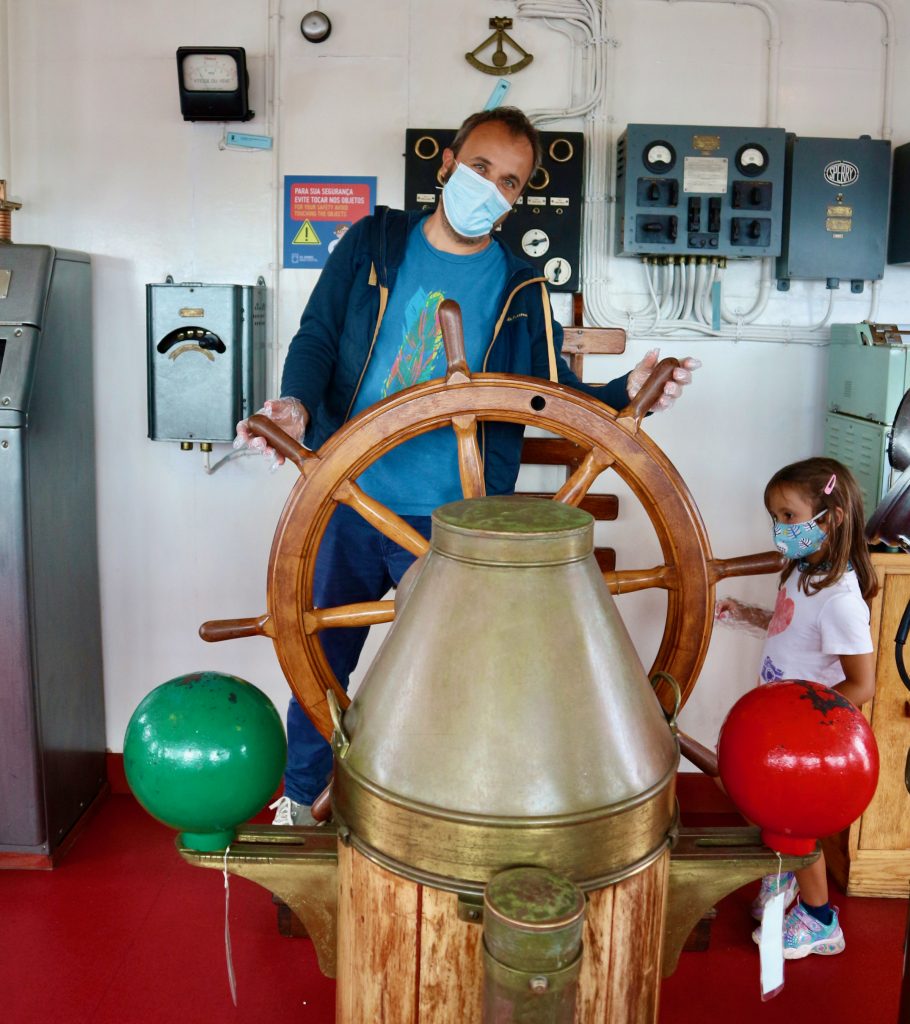
After 1973, the Gil Eannes was used as a cargo ship for cod from Norway to Portugal and again in 1975 as a hospital ship in Angola until, after a few more years as a cargo ship, it was finally laid up in Lisbon in 1984 and was to be scrapped in 1997. When the city of Viana do Castelo heard about this, it made efforts to save the ship and opened it to the public as a museum ship in 1998.
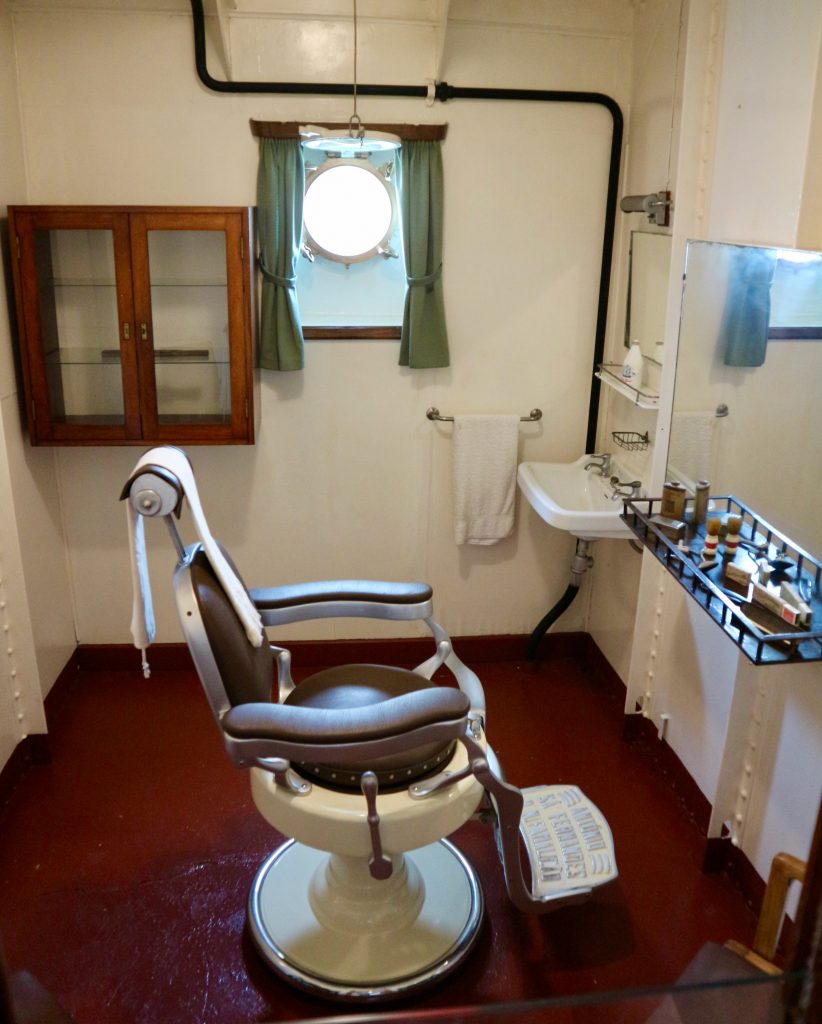
When we were finally allowed inside the Gil Eannes 22 years later, wearing face masks, we were immediately impressed by the excellent condition of the ship. It looked to us as if it had just docked in Viana do Castelo and the crew was just on shore leave. We took a look at the work and sleeping quarters of the radio operators and then the bridge and the captain’s cabin, which is the best equipped of all the cabins with its own work and living area, bathtub and sleeping area with telephone – all in the wonderful vintage style of the 1950s.
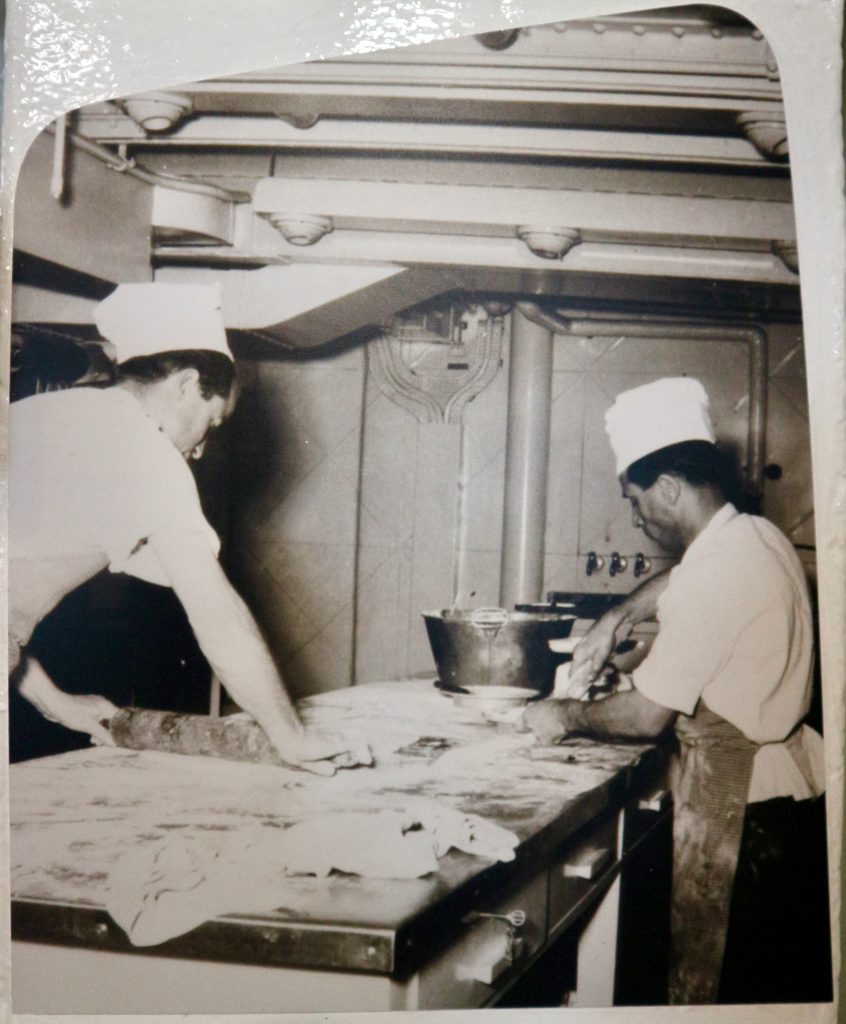
A little later, we passed through the hairdresser’s room, the large kitchen and various workshops and storage rooms. All the rooms were nicely decorated with their utensils and there were often photos of the former use or informative panels on the walls.
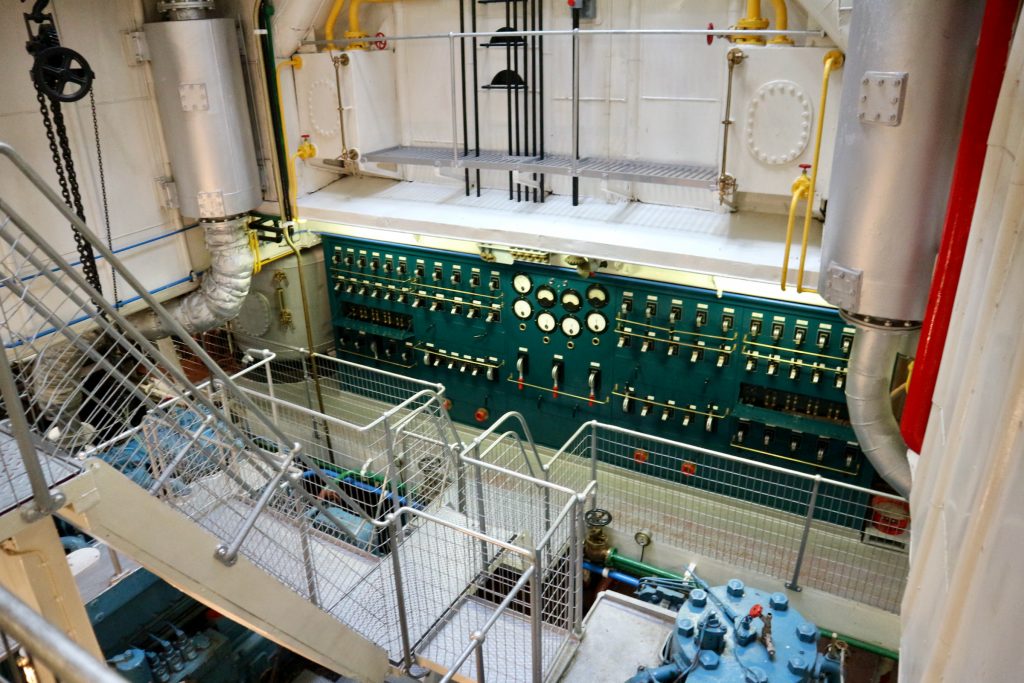
In a “wine cellar,” we found old wooden barrels of wine and spirits. Behind an inconspicuous door, a huge room suddenly opened up to us, stretching from the hull of the ship all the way up to the roof: the engine room with the two enormous diesel engines. Even here, you can climb up and down steep stairs and look at these enormous machines at your leisure, imagining how they must have once stomped and raged.
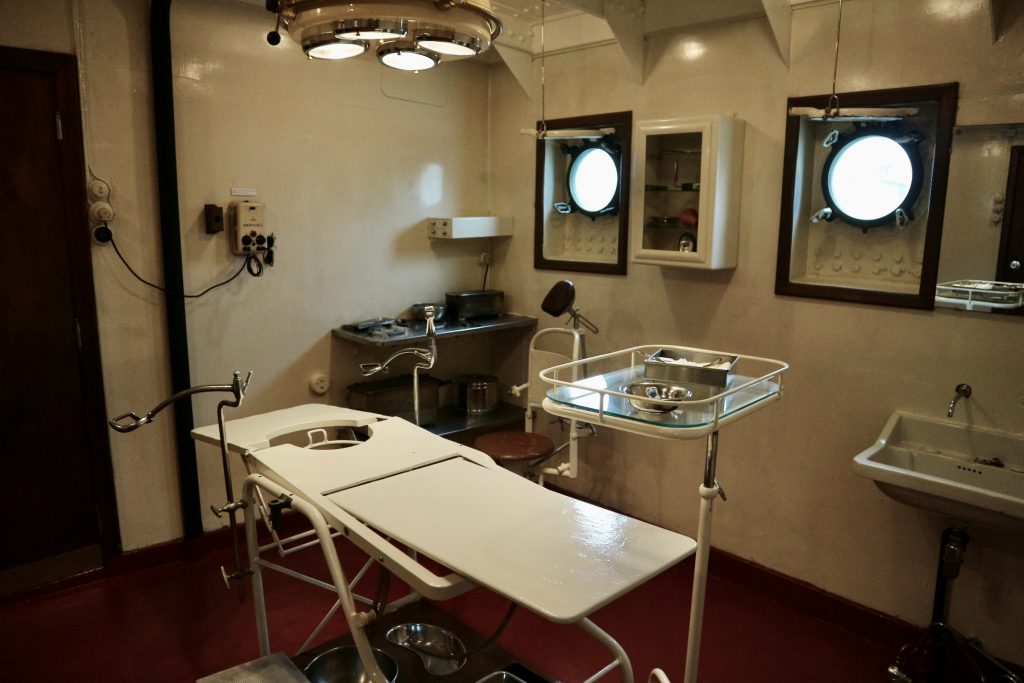
After a few more cabins, we reached the actual hospital rooms, first the treatment rooms, the X-ray room and some smaller patient rooms, the pretty pharmacy and the laundry, along with sleeping cabins for the respective staff. On the same floor, we also found the recreation rooms, where some men and women must have just played chess and draughts at the tables, the priest’s studio and the on-board library with a small selection of Portuguese and international reference books and novels from the 1970s and 1980s.
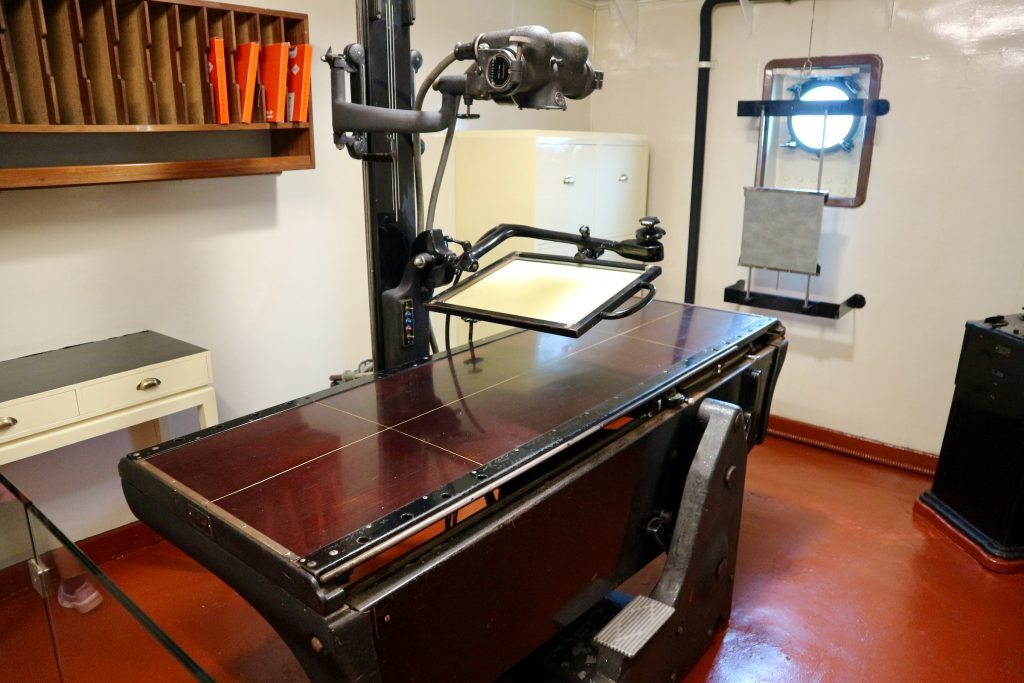
Our children and we adults couldn’t help but imagine everyday life on board at the sight of the cosy cabins and functional rooms. The eternal rocking of the ocean, the view through the small portholes out to stormy seas, barren coasts, icebergs drifting by and the many boats of the fishing fleet. Perhaps we got carried away imagining everyday life as more romantic than it actually was, but this insight into a world almost unknown to most of us was exciting and surprising.
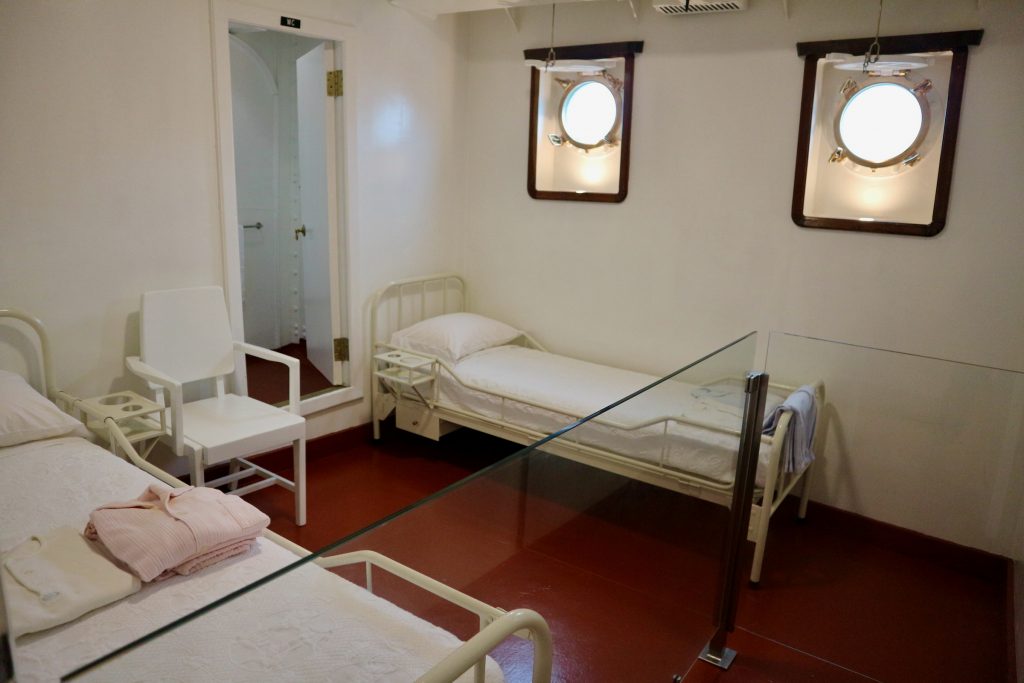
Meanwhile, blood continues to be analysed in the laboratory and surgery is in progress in the surgery room. The fact that the surgeons there wore the same masks as the boat’s visitors tempted us to take a brief external look at the bizarre world into which the Corona pandemic transported us what felt like ages ago.
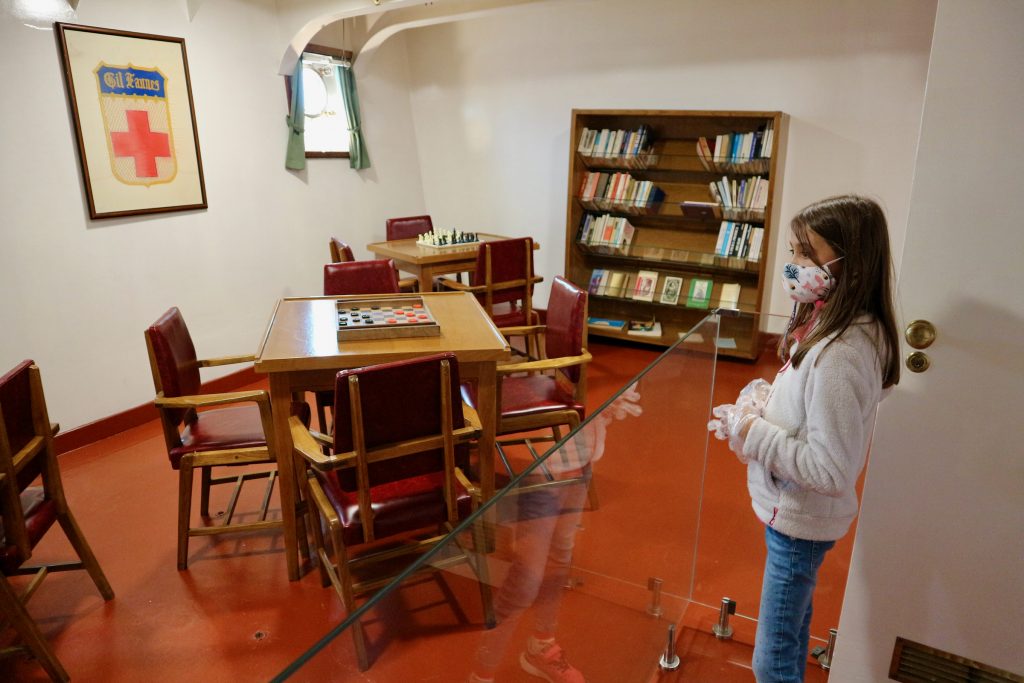
Back on deck, the clouds cleared a little and revealed the Santuário do Sagrado Coração de Jesus at the top of Monte Santa Luzia, the picturesque church that was quite obviously inspired by the Sacré Cœur Basilica in Paris. We were exhausted, but – children and adults alike – very satisfied with the many impressions we received during our tour.
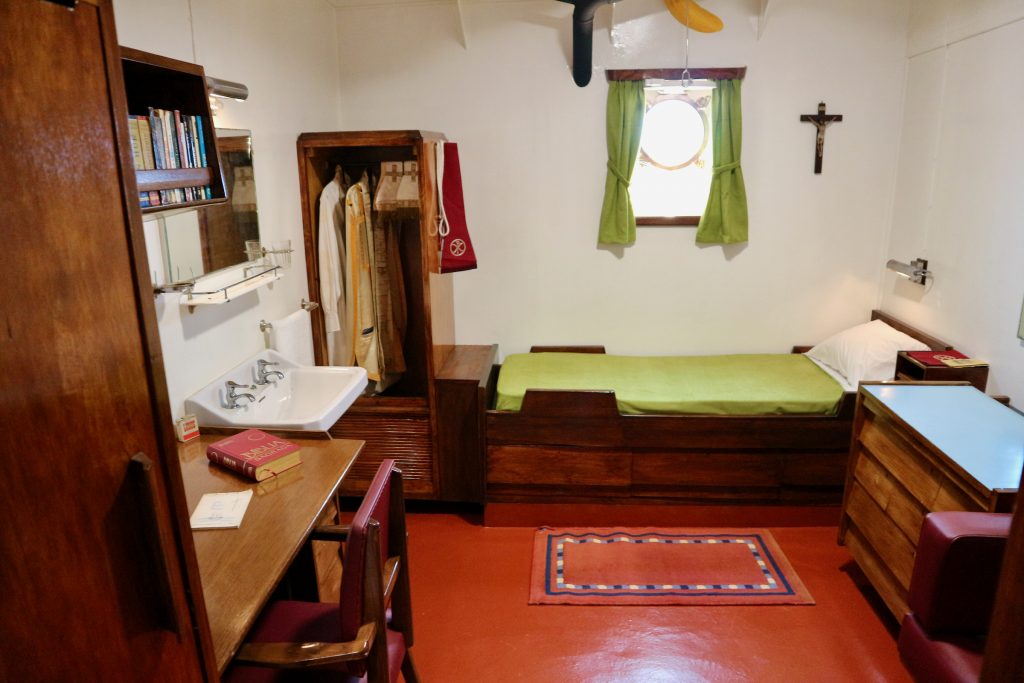
Viano do Castelo is an unexpectedly pretty little town at the mouth of the Rio Lima, which is quite impressive here, and one could spend a lovely time there in fine weather. The streets and squares with their beautiful Renaissance, Manueline, Baroque and Art Deco buildings are reminiscent of cities like Florence and Ferrara.
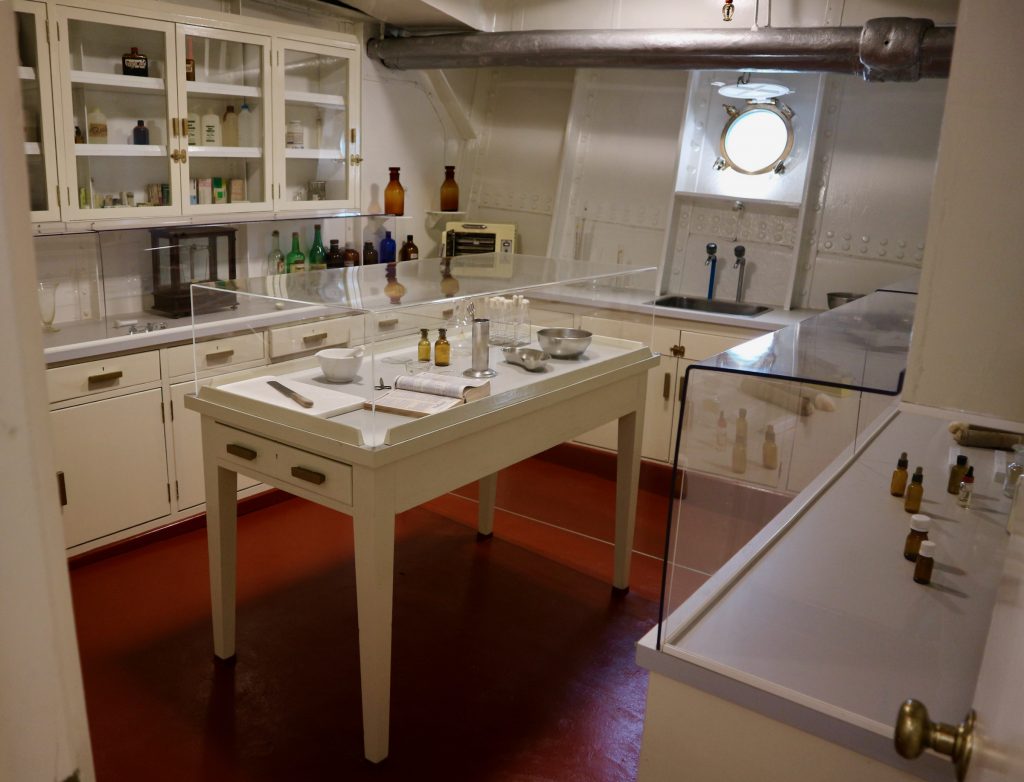
Very close to the magnificent Praça da República is the Pasteleria Manuel Natário, where you can try, among other things, the Bolas de Berlim, which are very popular in Portugal. Some even claim that the local doughnuts filled with vanilla pudding and sprinkled with cinnamon are the best in Portugal. As a Berliner, I have to admit that they are considerably tastier than the doughnuts known in Berlin as Pfannkuchen.
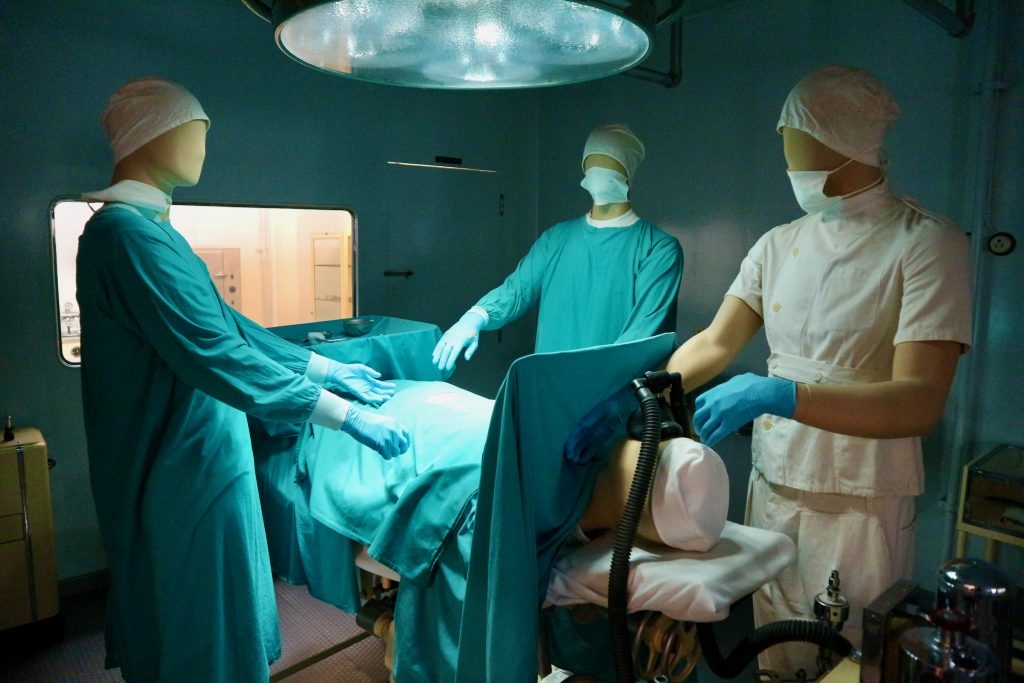
Incidentally, the Brazilian writer Jorge Amado made friends with the pastry chef Manuel Natário in this pasteleria during his European exile in the 1980s, who is said to have inspired him to create the character Captain Natário in his novel Tocaia Grande.
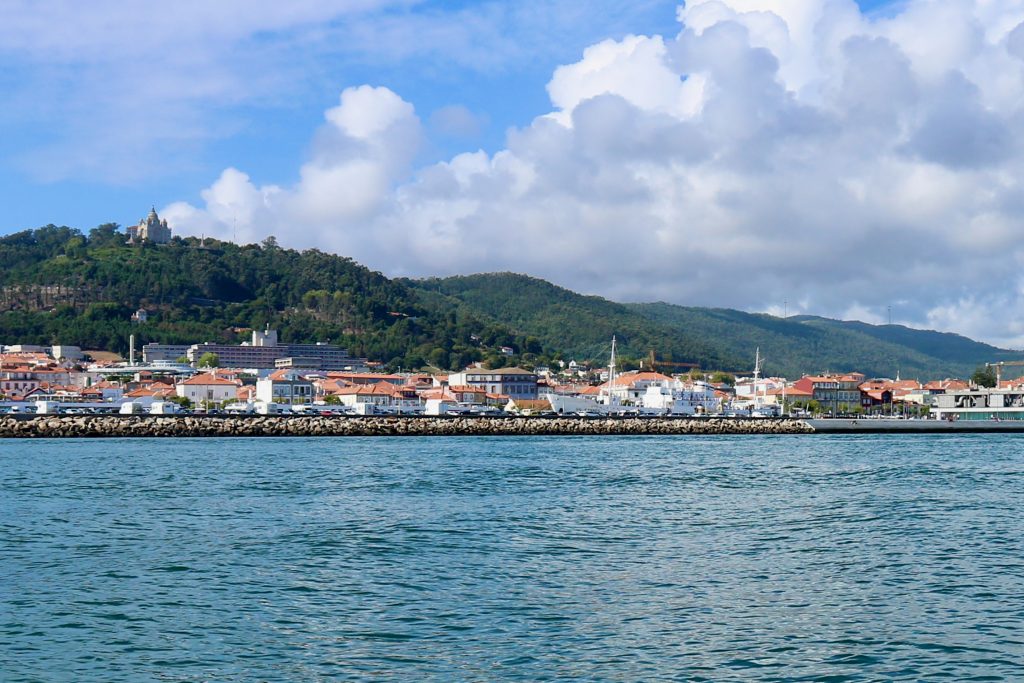
Hospital Ship Museum Gil Eannes
GPS: 41.690072, -8.830258
Opening hours:
Monday to Friday: 10:00 am – 5:00 pm
Saturday and Sunday: Probably closed
Also closed on Christmas holidays and New Year’s Day.
Admission:
Adults: 4.50 Euro
Children up to 6 years: free
Family ticket (2 adults and up to 4 children under 16): 10 euros
Website: fundacaogileannes.pt
Facebook: facebook.com/naviogileannes
Definitely try out:
Bolas de Berlin, Pão de Ló de Jorge Amado oder Biscoitos de Viana in der Pastelaria Confeitaria Manuel Natário.
GPS: 41.692763, -8.829031
Website: pastelariaconfeitariamanuelnatario.pt
Facebook: facebook.com/profile.php?id=100002131843411
